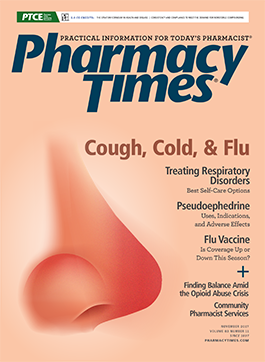Publication
Article
Pharmacy Times
Mix It Correctly:Reduce the Risk of Dispensing Unreconstituted Drugs
Author(s):
We have published cases of medications dispensed before they were reconstituted, particularly unmixed antibiotics.
We have published cases of medications dispensed before they were reconstituted, particularly unmixed antibiotics. Most cases involved pediatric patients who received overdoses when their parents administered the unreconstituted drug powder. Unfortunately, the pharmacy staff involved had failed to reconstitute the antibiotics before dispensing them to the patients or caregivers.
However, the Institute for Safe Medication Practices also has received reports from customers about inappropriately mixed oral suspensions. Most often, not enough diluent was used to reconsti- tute the medication powder. For example, a mother noticed that her son’s Quillivant XR (methylphenidate extended release) suspension was much more viscous than usual. The bottle was only half full, and it was obvious that it held much less fluid than even the 158 mL of water required for reconstitution of the Quillivant XR 900 mg bottle.
In another case, a 3-year-old girl was prescribed cephalexin oral suspension for 10 days. Her mother followed the dosing instructions printed on the pharmacy label but on day 7 ran out of the antibiotic. It was suspected that the incorrect amount of diluent had been used to reconstitute the antibiotic. To make matters worse, when the mother reported the potential error to the pharmacist, instead of acknowledging that the product may have been reconstituted incorrectly, he accused her of spilling the medication.
Inappropriately reconstituted medications, particularly antibiotics, can lead to adverse effects, including both underdoses and overdoses and treatment failures. It is critical that pharmacies examine their processes for reconstituting medications and take steps to reduce the risk of errors.
Consider the following risk-reduction strategies:
- Add a note or use some other distinct visual cue (eg, a brightly colored “need to mix” card) to the prescription receipt, indicating that the product needs to be reconstituted prior to dispensing.
- Explore ways to leverage technology to reduce the risk of dispensing a product that has not been reconstituted. For example, configure the pharmacy computer system to flag prescriptions that require reconstitution so that an alert to the technician pops up on the screen at the point of sale.
- Designate a separate area for containers with products that require reconstitution. After the product is reconstituted, it should be given to the pharmacist to counsel the patient on how to measure the medication.
- Incorporate an independent double check of the volume of diluent measured prior to the actual reconstitution of the product. Use the manufacturer’s bottle or package insert to verify that the specified amount has been measured accurately.
- Include specific product descriptions on the prescription label (eg, “orange flavored, white, opaque liquid”) that will cue the patient or caregiver that it is an oral liquid product.
- At the point of sale, open the bag and review with the patient or caregiver the label, storage requirements, route of administration, directions for use, and number of days the therapy will cover. Shake the bottle to demonstrate how to mix the suspension before administering, then open it to check that the contents have been reconstituted.
- Ensure that oral syringes or other metric measuring devices that correspond to the instructions on the label are provided.
- Educate patients and caregivers regarding proper use and cleaning of measuring devices.
- Using the teach-back method, have the caregiver or patient demonstrate how to measure and administer the dose to confirm their understanding.
Michael J. Gaunt, Pharm D, is a medication safety analyst and the editor of ISMP Medication Safety Alert! Community/Ambulatory Care Edition.







